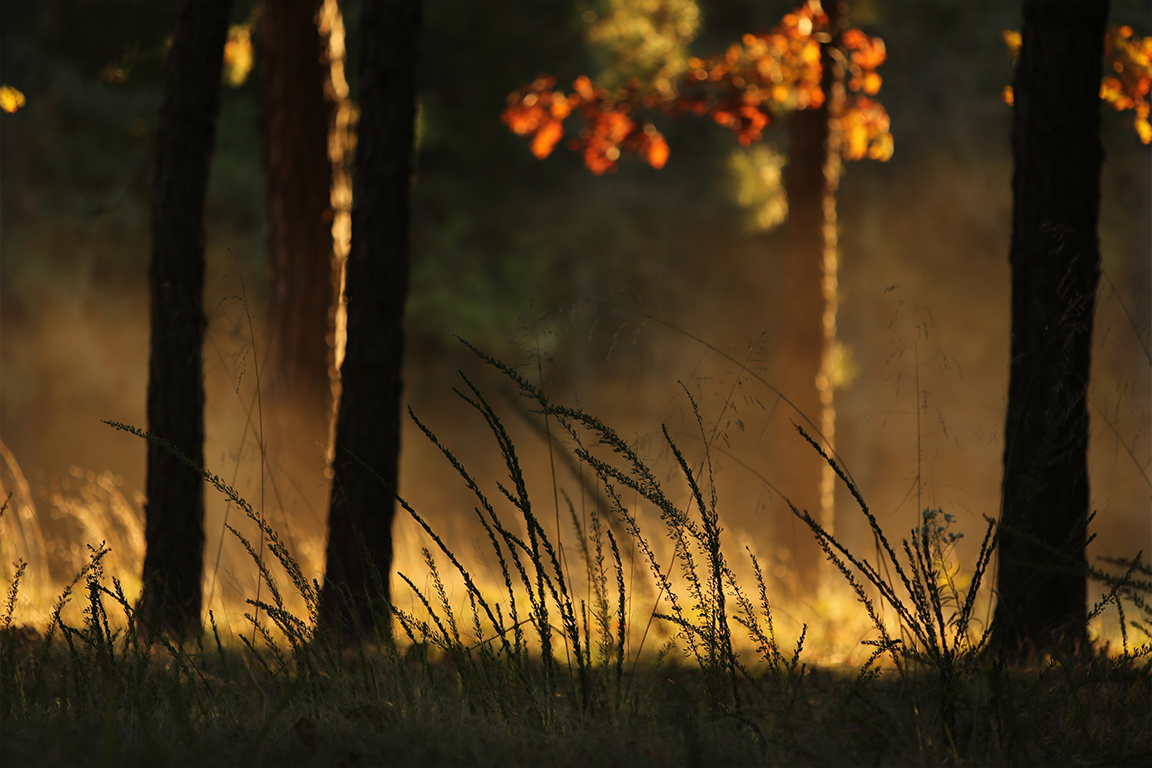Expanded Content: Major Met Moments
MAJOR Met Moments
It’s no secret that the Met Area has hosted U.S. Opens and PGA Championships for as long as these majors have been around. With a number of these championship heading our way in the next few years (see the Met Golfer Article “Major Attraction”) we took a look back at some of the highlights from majors right here in our backyard through the years, all the way back to the first PGA Championship at Siwanoy Country Club in Bronxville in 1916.
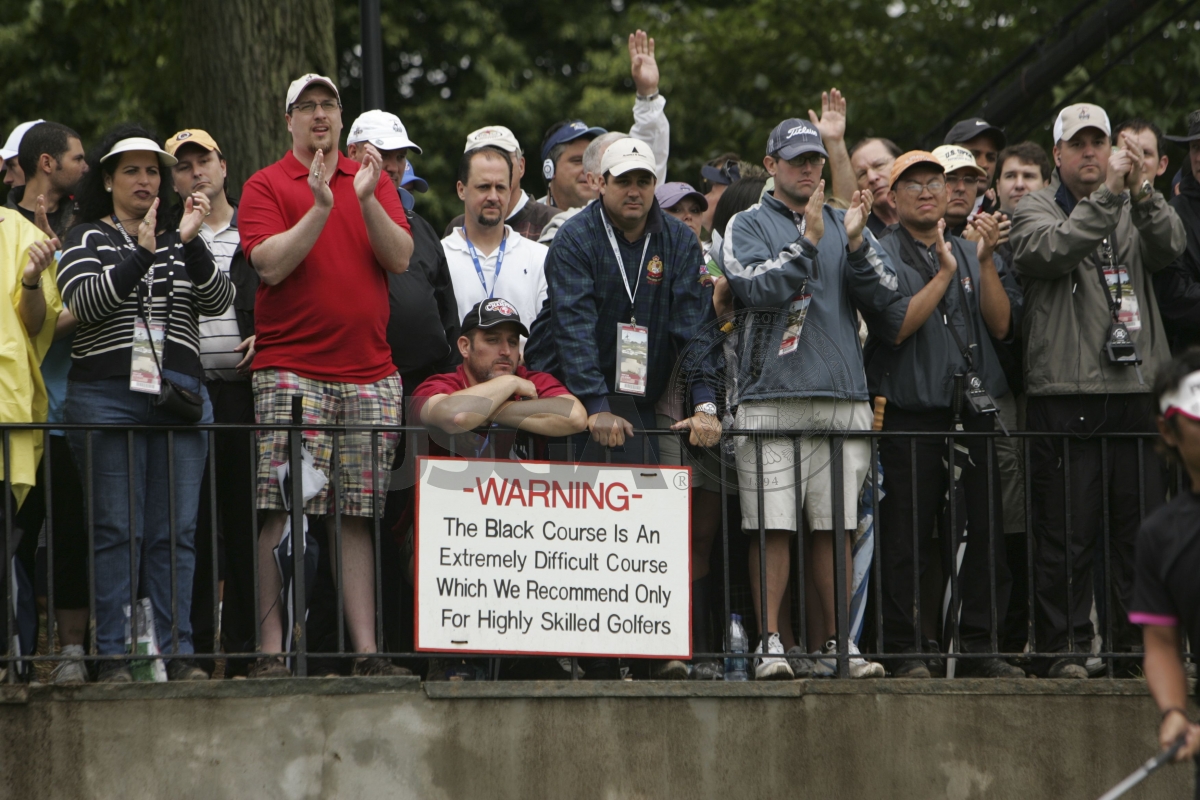 2009 • 109th U.S. Open at Bethpage State Park – Black Course
2009 • 109th U.S. Open at Bethpage State Park – Black Course
Lucas Glover, an underdog at the beginning of the week, captured his first major championship by two strokes ahead of runners-up Ricky Barnes, David Duval, and Phil Mickelson (Lefty’s fifth second-place finish in the U.S. Open). Glover remained steady all week despite multiple weather delays throughout the championship, accumulating a 4-under 276 total on the difficult Black Course. Many of those who attended recall muddy conditions from the rain and large crowds, in addition to the Monday finish.
 2006 • 106th U.S. Open at Winged Foot Golf Club – West Course
2006 • 106th U.S. Open at Winged Foot Golf Club – West Course
Phil Mickelson stood on the 18th tee of Winged Foot's famed West Course needing par for his first U.S. Open victory and third consecutive major championship title. However, he memorably found trouble off the tee and made double-bogey, leading Geoff Ogilvy to an unlikely one-stroke victory and his first career major. For the first time since 1978, no players finished under par for the championship.
2005 • 87th PGA Championship at Baltusrol Golf Club – Lower Course
In the first PGA Championship of Baltusrol's lengthy major championship history, Phil Mickelson overcame sweltering August heat, with a birdie on the 72nd hole leading to the win. His 4-under 276 total gave him a one-stroke victory over Steve Elkington and Thomas Bjorn. Mickelson praised longtime Baltusrol head professional Doug Steffen for helping him claim the title, as Steffen provided key hole-by-hole insight for Mickelson prior to the championship.
2004 • 104th U.S. Open at Shinnecock Hills Golf Club
Windy conditions at one of New York’s oldest and finest courses caused volatility on the leaderboard and led to a final round scoring average of 78.8. Retief Goosen used his calm nature and smooth putting stroke to play the final three holes of the championship in 1-under, leading to his second career U.S. Open title. Goosen finished at 4-under overall, while Phil Mickelson notably double-bogeyed the par-3 17th hole, finishing the championship at 2-under.
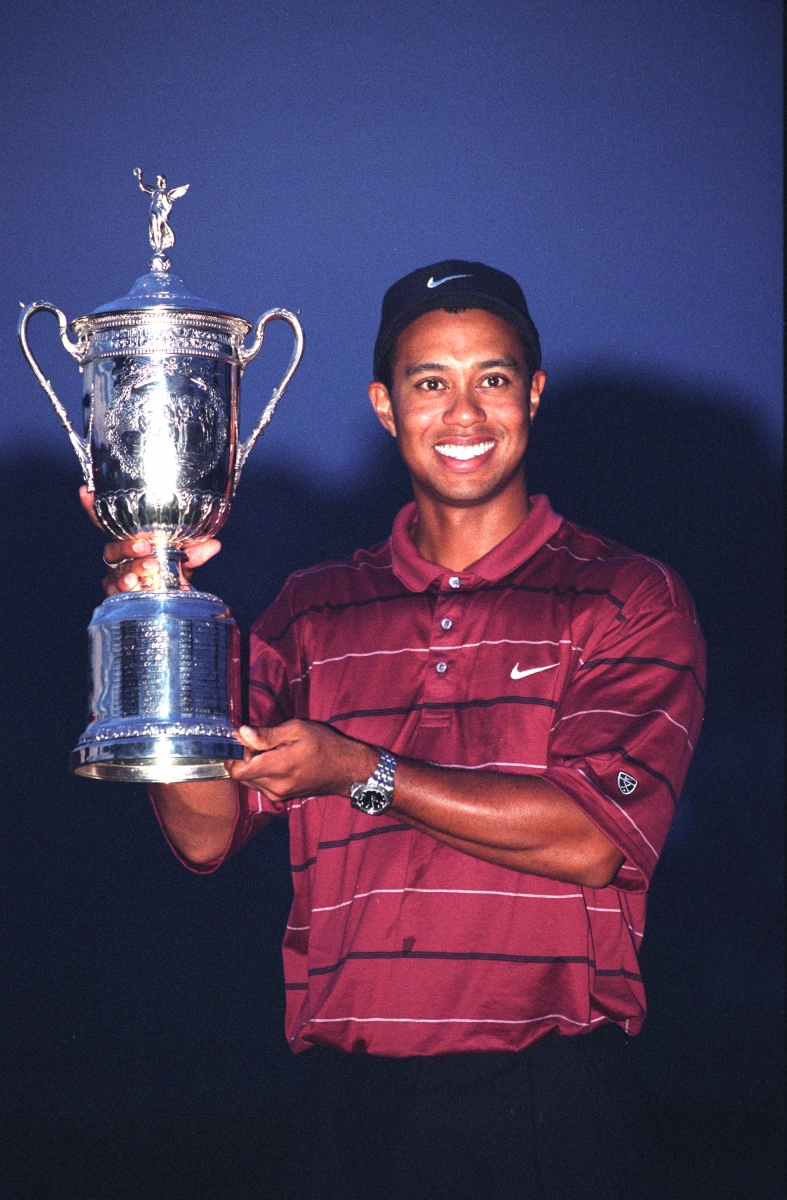 2002 • 102nd U.S. Open Championship at Bethpage State Park – Black Course
2002 • 102nd U.S. Open Championship at Bethpage State Park – Black Course
During one of the prime stretches of Tiger Woods’ career, he finished this championship with a total score of 3-under 277, defeating Phil Mickelson by three strokes to win the first-ever U.S. Open on a public venue. After winning the Master just two months prior, Woods became the first player in 30 years to capture the season’s first two major championships.
1997 • 79th PGA Championship at Winged Foot Golf Club – West Course
Davis Love III cruised to a five-stroke victory at the fifth major championship to be played on Winged Foot Golf Club’s historic West Course. A steady rain fell for the majority of the back nine, yet skies cleared and a rainbow appeared as Love III finished the 72nd hole. Many interpreted the rainbow as a symbol of acknowledgement from Davis Love Jr., Love III's late father who served as a career PGA professional.
1995 • 95th U.S. Open – Shinnecock Hills Golf Club
After Greg Norman fired opening rounds of 68 and 67, Corey Pavin played steadily, carding rounds of 72-69-71 to stand three shots back entering the final round. His Sunday 68, which included a memorable 4-wood approach shot into the 18th green, propelled him to the top of the leaderboard and to a two-stroke win over Norman for what turned out to be his only major championship victory. In his first career U.S. Open start, amateur Tiger Woods withdrew in the second round with a wrist injury.
1993 • 93rd U.S. Open at Baltusrol Golf Club – Lower Course
Lee Janzen became just the second player in the championship’s history to shoot four rounds in the 60’s, leading to an 8-under 272 total and a two-shot victory over Payne Stewart. His total tied Jack Nicklaus’s then U.S. Open scoring record, which was set in 1980 also at Baltusrol. Janzen chipped in for birdie on the par-3 16th despite facing deep rough, then he birdied the par-5 finishing hole to solidify his second U.S. Open title.
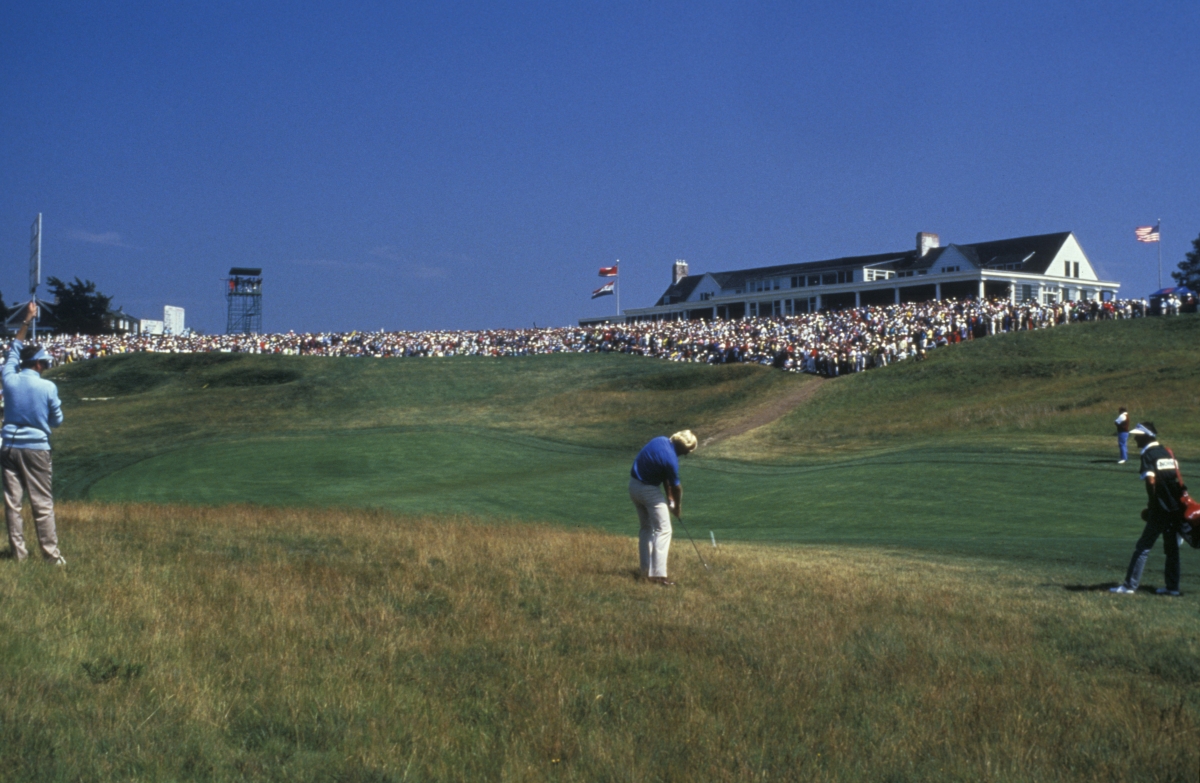 1986 • 86th US Open at Shinnecock Hills Golf Club
1986 • 86th US Open at Shinnecock Hills Golf Club
In a year where Greg Norman led each of the four majors after 54 holes, Raymond Floyd shot a final round 66 to win his fourth major championship and first career U.S. Open. Norman's final round 75 dropped him out of the top 10 as Floyd's 1-under 276 topped Chip Beck and Lanny Wadkins by a two stroke margin.
1984 • 84th US Open at Winged Foot Golf Club – West Course
Greg Norman put together a heroic back-nine effort—including an incredible par-save on the 72nd hole that elicited a towel wave from Fuzzy Zoeller back in the fairway—leading to an 18-hol Monday playoff with Zoeller. However, Zoeller cruised to his first U.S. Open title and second major victory, firing a playoff-record round of 67.
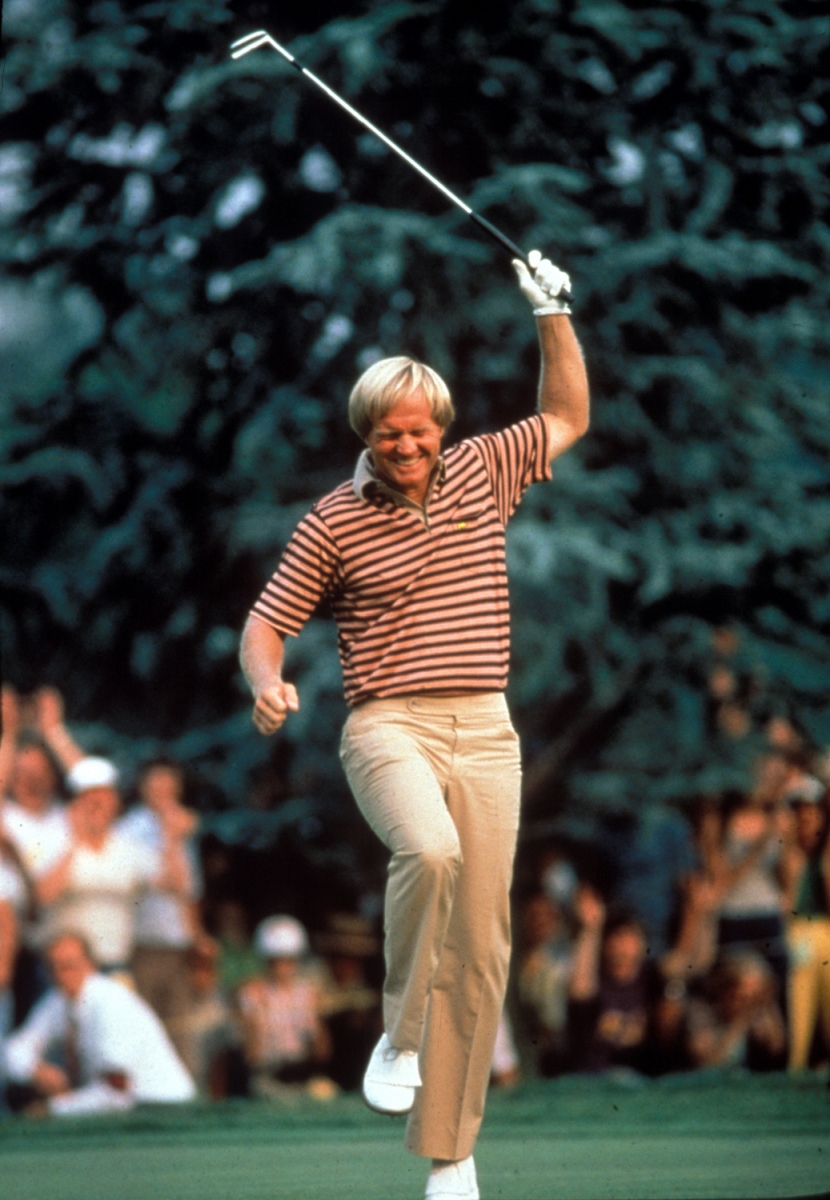 1980 • 80th U.S. Open at Baltusrol Golf Club – Lower Course
1980 • 80th U.S. Open at Baltusrol Golf Club – Lower Course
Jack Nicklaus began his title run with a record-tying 63 in the opening round. On Sunday, he birdied the final two holes—both par-5s—to set a new U.S. Open scoring record and top Japan’s Isao Aoki by two shots. His 272 tournament total stood for 30 years before Rory McIlroy posted a 268 championship total at Congressional in 2011.
 1974 • 74th U.S. Open at Winged Foot Golf Club – West Course
1974 • 74th U.S. Open at Winged Foot Golf Club – West Course
Gary Player held the first round lead following an even-par 70 performance, leading the way for what became known as the “Massacre at Winged Foot,” and the most challenging U.S. Open in the event’s history. While players like Tom Watson and Arnold Palmer fell back on Sunday, Hale Irwin held on down the stretch, grinding out a pair of pars on the final two holes to take the title with a 7-over score of 287, two clear of Forrest Fezler.
1967 • 67th U.S. Open at Baltusrol Golf Club – Lower Course
A stunning second round 67 from Jack Nicklaus and a 68 by Arnold Palmer led to the two-horse race between the iconic duo. However, Nicklaus saved his best for the final day, as he fired an outstanding 65 en route to a four-stroke victory over Palmer for his first of two U.S. Open triumphs at Baltusrol. Nicklaus’s 1-iron approach shot into the green—which came after a layup—set up a birdie putt which he drained for a then-tournament record total of 275. He set a new record 13 years later, also at Baltusrol.
1959 • 59th U.S. Open at Winged Foot Golf Club – West Course
Billy Casper tallied a 2-over 282 total, besting players like Ben Hogan, Sam Snead and runner-up Bob Rosburg for his first of three major championship titles. According to the USGA, Casper had an incredible 31 1-putt greens and just a single 3-putt over the 72 holes. Another fascinating fact? Casper felt as if going for birdie on the par-3 third hole was a risky play, so he laid up each day—and made his par every time.
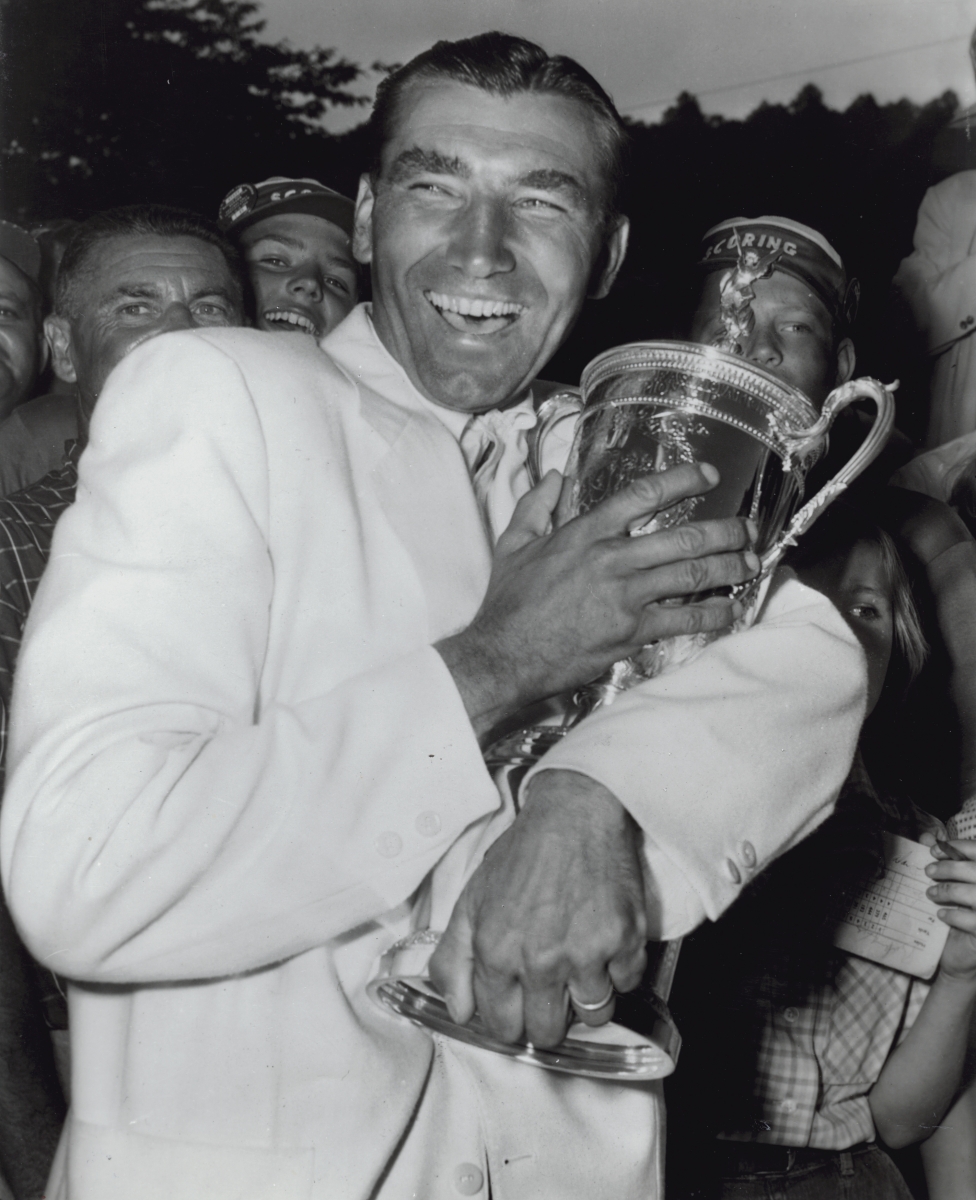 1954 • 54th U.S. Open at Baltusrol Golf Club – Lower Course
1954 • 54th U.S. Open at Baltusrol Golf Club – Lower Course
The first open to be nationally televised featured the game’s greatest names at the time—like Sam Snead and Ben Hogan—but Ed Furgol came away with the victory. Though he played on the PGA Tour, Furgol had decided to change paths and become a club pro prior to this win. A wayward drive looked like trouble on the 18th, but a heady play to shoot up the fairway of the parallel 18th on the Upper Course led to a par save and a one-shot win over Gene Littler.
1939 • 22nd PGA Championship at Pomonok Country Club
While the course in Queens may no longer exist (it was disbanded in 1949), an outstanding finish remains for this major championship, as Henry Picard defeated Byron Nelson with a birdie on the 37th hole, since the PGA was decided in match play format at the time.
1936 • 40th U.S. Open at Baltusrol Golf Club – Lower Course
Harry Cooper looked to be well on his way to claiming the title, but three bogies over the final five holes left the door open. An unknown Tony Manero capitalized in the moment, firing an incredible 67 to finish at 282, two shots ahead of Cooper. The purse? $5,000, with a $1,000 winner’s share.
1932 • 36th U.S. Open at Fresh Meadow Country Club
Ten years after his first U.S. Open title, Gene Sarazen claimed his second such victory, despite being five strokes back following 36 holes of play. Sarazen—who was the professional at Fresh Meadow, resigned from his position citing the home-pro jinx—ended up firing scores of 70 and 66 over the final two rounds to set several new records and vault himself to the win by three shots over Bobby Cruickshank and Phillip Perkins.
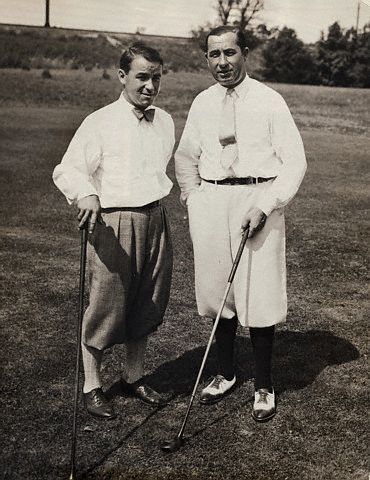 1930 • 13th PGA Championship at Fresh Meadow Country Club
1930 • 13th PGA Championship at Fresh Meadow Country Club
Host professional Gene Sarazen battled to the championship match, but in the end Tommy Armour earned the 1-up victory to take the second of his three major championships.
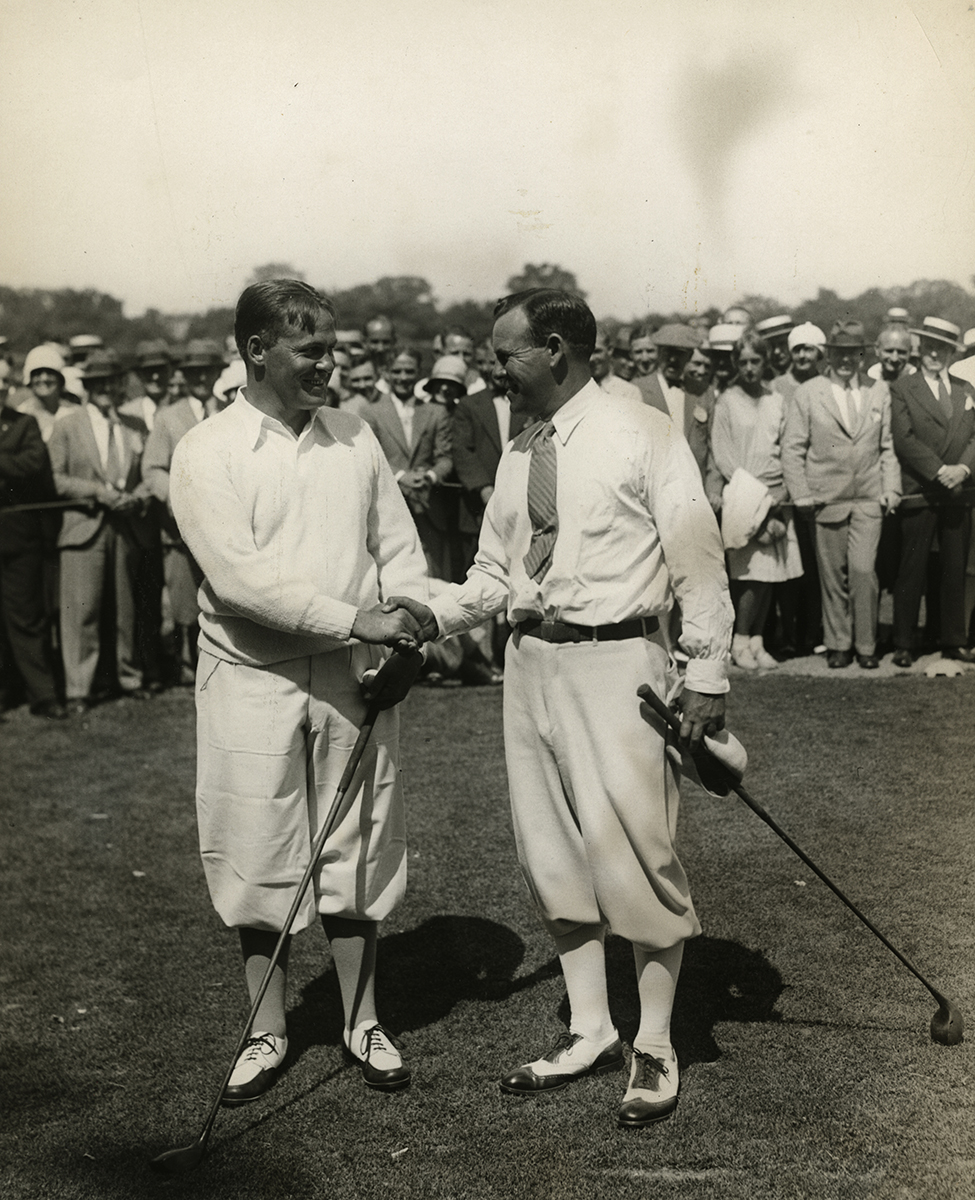 1929 • 33rd U.S. Open at Winged Foot Golf Club – West Course
1929 • 33rd U.S. Open at Winged Foot Golf Club – West Course
Bobby Jones nearly threw away his lead in this U.S. Open, as he triple-bogeyed the 15th hole and made another bogey on the 16th. However, a pair of pars led him to a playoff with Al Espinosa. The 36-hole playoff was all Jones, as he carded rounds of 72 and 69 to Espinosa’s 84-80 for a 23-shot win and his third U.S. Open title.
1926 • 9th PGA Championship at Salisbury Golf Club – Red Course
Walter Hagen marched to a 5&3 victory over Leo Diegel at the club that is now the Red Course at Eisenhower Park, winning his third straight PGA title. Not only did he take the overall victory here, but he also was the medalist of the 36-hole qualifier.
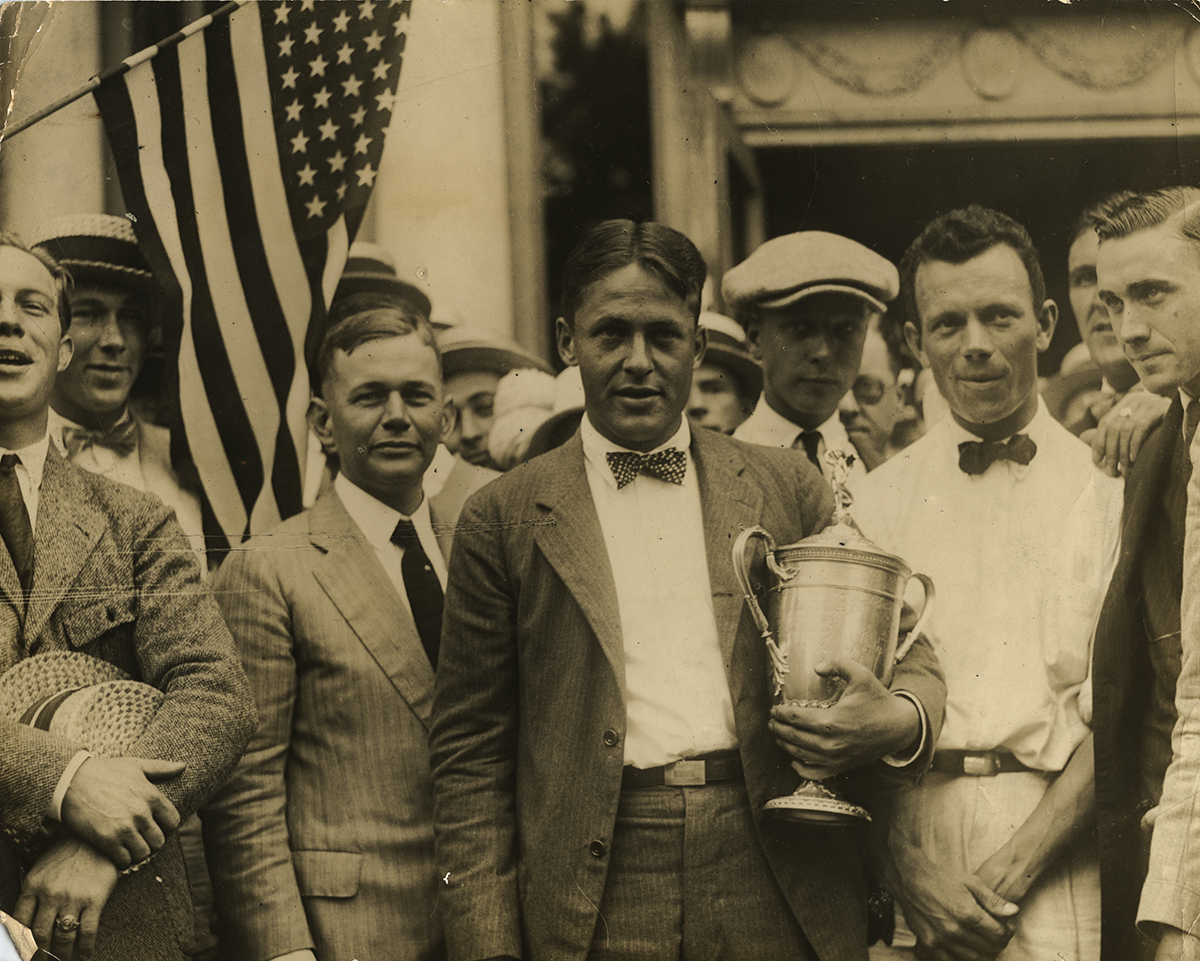 1923 • 27th U.S. Open at Inwood Country Club
1923 • 27th U.S. Open at Inwood Country Club
The legendary Bobby Jones’ first major championship came right here in the Met Area, as he defeated Bobby Cruickshank by two strokes in an 18-hole playoff. Cruickshank birdied the final hole to tie Jones, but it was Jones that was clutch down the stretch of the playoff. Jones reportedly hit a 2-iron from the rough to eight feet on the final hole while Cruickshank laid up from the rough and put his approach in a bunker.
1923 • 6th PGA Championship at Pelham Country Club
In an epic battle against Walter Hagen, Gene Sarazen was victorious in 38 holes. At this time, the 64 golfers qualified in sectional tournaments to be part of the 64-man, match play competition. The six rounds of match play were all played over 36 holes.
1921 • 4th PGA Championship at Inwood Country Club
With a starting field of 32 golfers, Walter Hagen and Jim Barnes met in the final, with Hagen coming out victorious, 3&2.
1919 • 2nd PGA Championship at Engineers Country Club
The PGA Championship was not conducted in 1917 or 1918 due to World War I. With the championship resuming, Jim Barnes was victorious once again, defeating Fred McLeod by a 6&5 margin in the final.
 1916 • 1st PGA Championship at Siwanoy Country Club
1916 • 1st PGA Championship at Siwanoy Country Club
The first-ever PGA Championship involved 32 golfers, who qualified by sectional tournaments and play consisted of 36-hole matches. Jim Barnes faced Jock Hutchison in the final, claiming the inaugural title, 1up. Walter Hagen and Willie Macfarlane advanced to the semifinals.
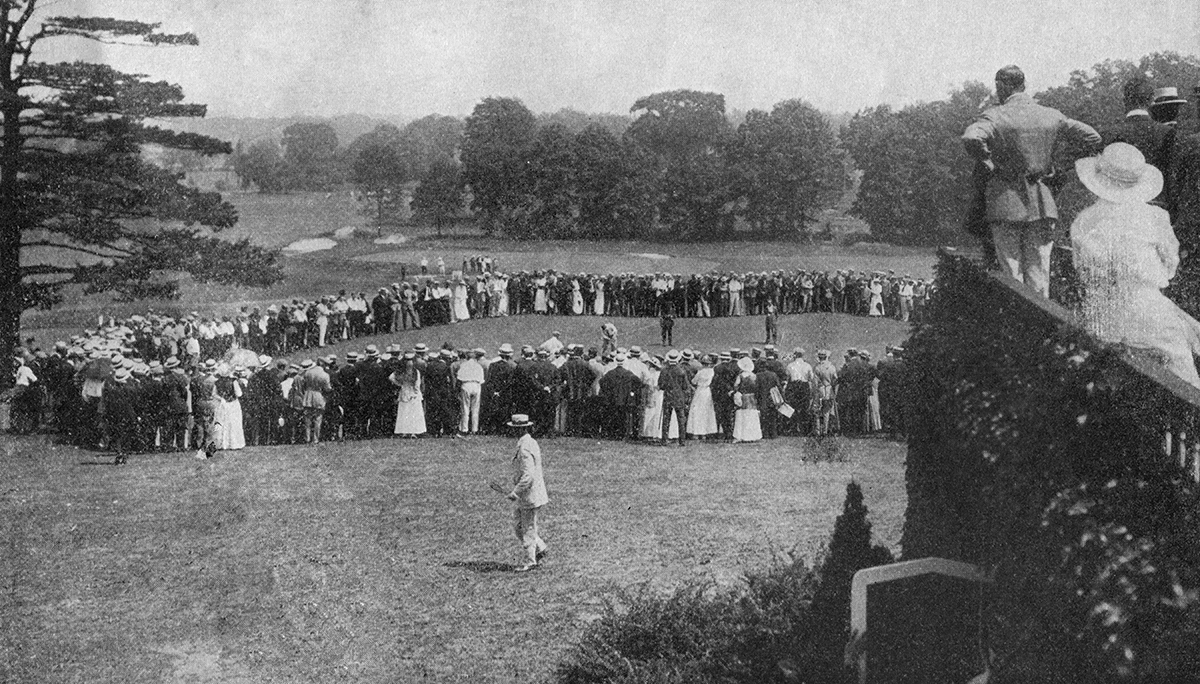 1915 • 21st U.S. Open at Baltusrol Golf Club – Old Course
1915 • 21st U.S. Open at Baltusrol Golf Club – Old Course
This was the last national championship played on Baltusrol’s Old Course, with Jerome Travers narrowly edging Tom McNamara by one shot with a four-round total of 297.
1909 • 15th U.S. Open at Englewood Golf Club
David Hunter became the first ever player in U.S. Open history to break 70, but George Sargent stood as the victor in the end, besting runner-up Tom McNamara by four shots. McNamara also broke 70 in the championship, but Hunter was consistent for the four days with rounds of 75-72-72-71.
1903 • 9th U.S. Open at Baltusrol Golf Club – Old Course
Willie Anderson defeated David Brown in a playoff, after the duo stood tied at 307 for the championship, eight shots ahead of the remainder of the field. His 82 in the playoff was good enough to earn his second U.S. Open title.
1902 • 8th U.S. Open at Garden City Golf Club
Laurie Auchterlonie took this U.S. Open title with a four-day score of 307, besting Stewart Gardner and Walter Travis—the very designer of Garden City Golf Club—by six strokes. The championship was played over two days, with 36 holes being played each day.
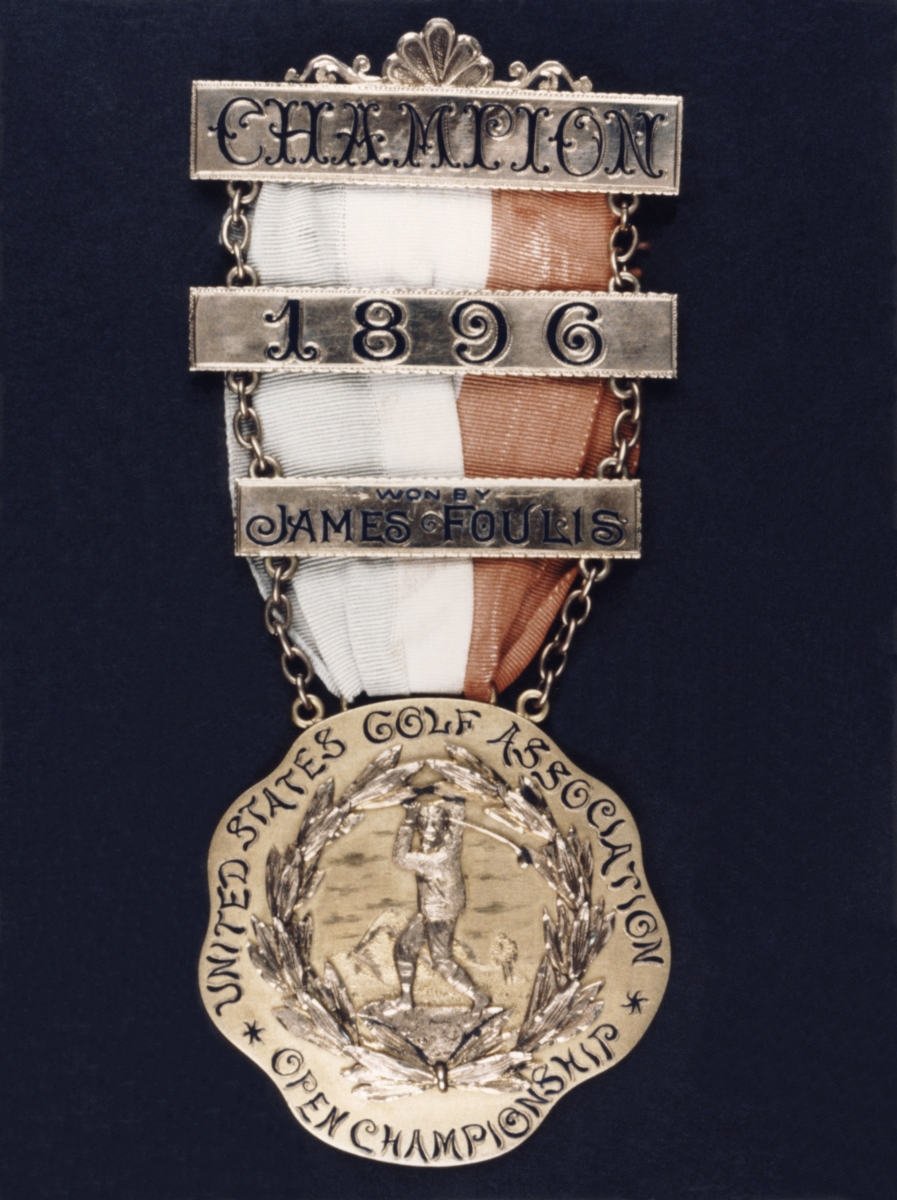 1896 • 2nd U.S. Open at Shinnecock Hills Golf Club
1896 • 2nd U.S. Open at Shinnecock Hills Golf Club
James Foulis claimed a three-shot win over Horace Rawlins, winner of the inaugural U.S. Open. However, in the earliest playings, the U.S. Open was seen as secondary to the U.S. Amateur Championship. A total of 28 players finished the second U.S. Open.
Read the original article Major Attraction
Photos: USGA
